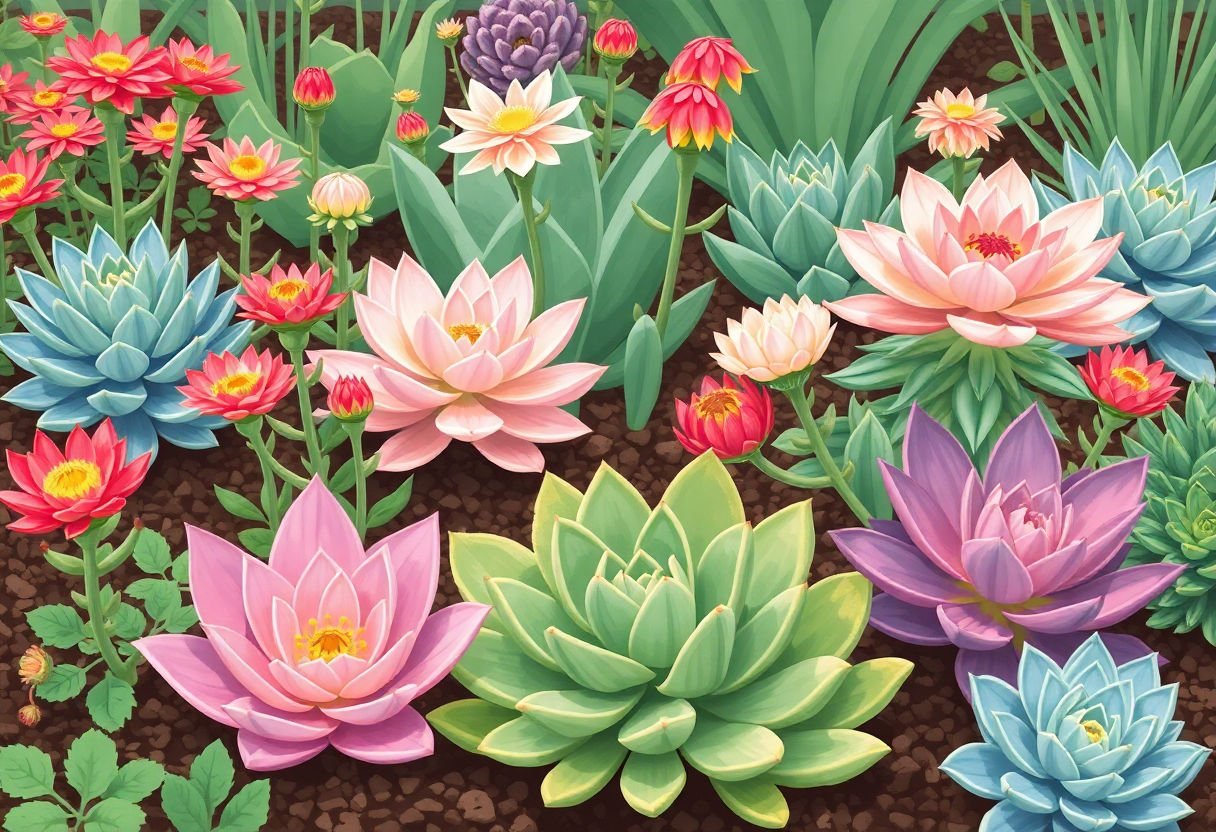Exploring the enchanting allure and diverse needs of succulents as they navigate seasonal blooms offers a fascinating glimpse into nature’s adaptability. These resilient plants captivate gardeners with their vibrant displays, perfectly timed to each season. This guide delves into the blooming cycles of various succulent species, providing insight into their seasonal care requirements—from nurturing techniques in the lively spring, mastering hydration in the scorching summer, to winter dormancy strategies. Gain essential knowledge to address common blooming issues and apply expert fertilization and soil tips, ensuring your succulent garden flourishes year-round.
Key Takeaways
- Understanding the unique blooming cycles of various succulent species is crucial for tailoring care to each plant’s needs throughout the year.
- Spring marks a period of active growth for succulents, requiring increased watering and attention to sunlight exposure.
- Summer care involves managing heat stress and ensuring succulents receive adequate hydration without overwatering.
- As fall approaches, implementing protective measures helps succulents adjust to cooler temperatures, promoting continued health.
- Recognizing the winter dormancy period is essential, with reduced watering and care adjustments necessary to support succulent survival.
Understanding Succulent Bloom Cycles
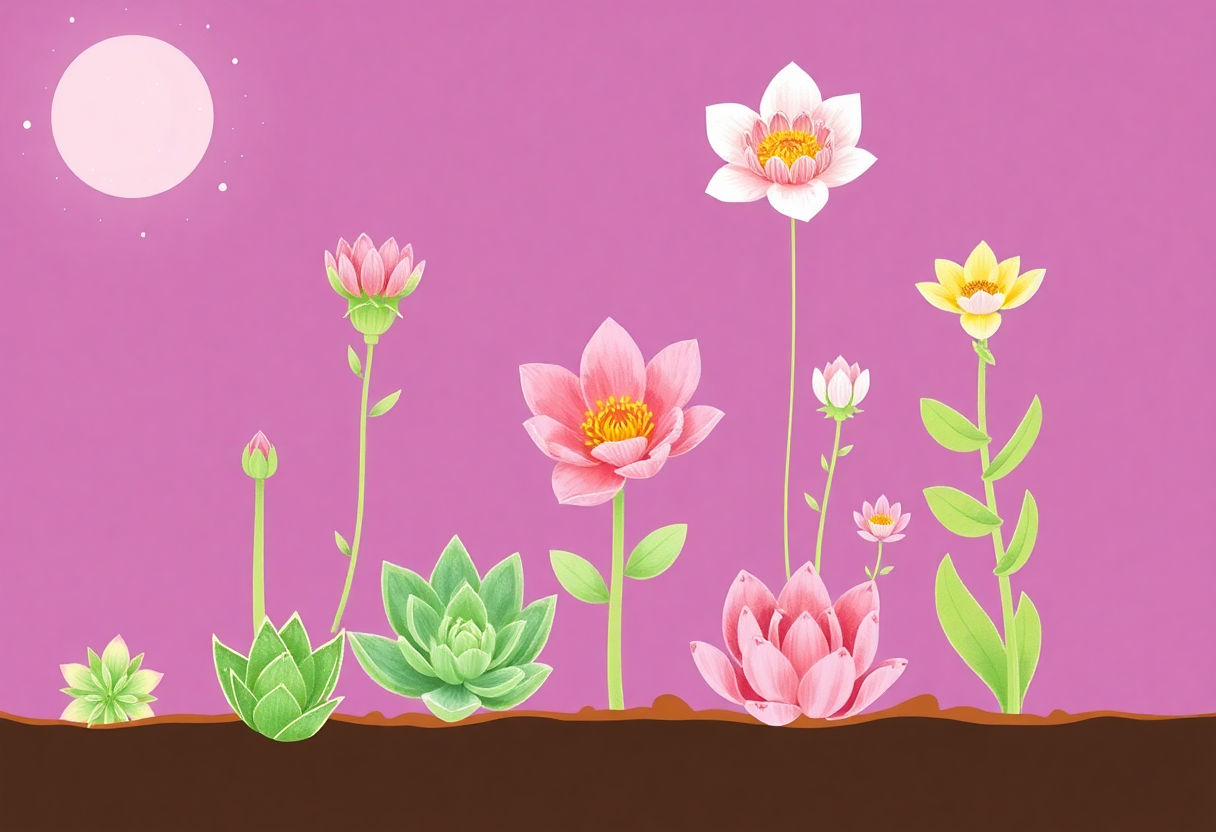
Succulent blooming cycles differ significantly depending on the species, climate conditions, and care they receive. These resilient plants often produce flowers as a sign of reaching maturity and optimum health. Understanding the blooming patterns of common succulents can enhance your ability to nurture them effectively.
Echeveria, one of the most popular succulent species, is known for its magnificent blooms that often occur between late winter and early spring. These blooms, sometimes taking weeks to unravel fully, showcase vibrant colors that can elevate any garden. A noteworthy example can be observed in the succulent flowering timeline, demonstrating the transformation from bud to full blossom.
Aloe Vera, another prevalent succulent, typically flowers in spring. Its towering inflorescences rise majestically above the rosette base, displaying tubular flowers that can attract hummingbirds and bees.
Christmas Cactus, contrary to its name, can have blooming periods extending from late autumn to winter, provided it receives the proper daylight conditions and temperature cues.
Haworthia, with its compact and often striking appearance, generally blooms in summertime, although the flowers are petite and not as eye-catching as others.
Several factors can influence these cycles:
- Temperature fluctuations: Extreme temperatures can interrupt or accelerate bloom cycles.
- Light exposure: Insufficient or excessive sunlight affects not only growth but also flowering phases.
- Watering habits: Overwatering or underwatering can hinder optimal flowering.
Recognizing and adapting to these cycles can immensely benefit succulent enthusiasts, facilitating a garden that thrives while showcasing the exquisite beauty and variety of succulent blooms.
Spring Care for Succulents
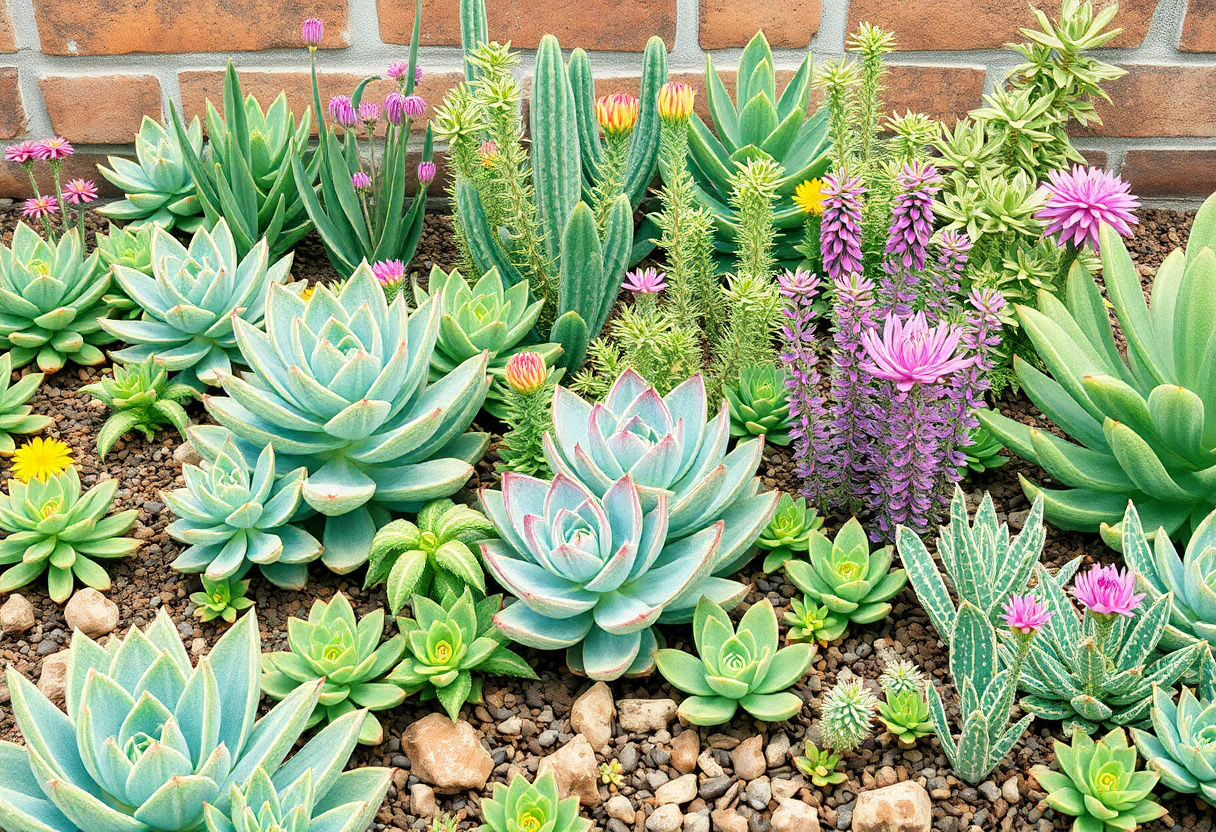
As the vibrant hues of spring transform gardens across the land, succulents too begin their active growth phase. It is during this season that these resilient plants require specialized care to ensure robust development.
Light Exposure: Springtime invites succulents to soak in increasing sunlight. A gradual acclimatization to more intense light is crucial to prevent scorching. Position succulents where they receive bright, indirect light, slowly increasing direct exposure. If necessary, employ sheer curtains or shades to filter harsh rays.
Watering Needs: With rising temperatures and extended daylight hours, succulents, although drought-tolerant, demand more frequent watering compared to their winter regimen. The rule of thumb remains: water deeply but infrequently, allowing soil to dry between sessions. This prevents root rot while satisfying their newfound thirst during this energetic period.
Soil and Re-potting: As roots expand, spring offers an opportune time to refresh or re-pot succulents. Utilize a well-draining soil mixture suited for cacti and succulents, ensuring adequate aeration. A blend incorporating sand, perlite, and potting mix often suffices.
Pest Management and Fertilization: Increased activity draws nutrient needs and potential pests. A diluted, balanced fertilizer applied monthly during spring supports growth. Vigilance against pests like aphids and mealybugs is crucial—early intervention prevents infestation.
For those nurturing Crassula species, proper spring care ensures vibrant clusters of blooms as detailed in this informative guide on Springtime succulent care. Embracing these practices aids in cultivating a thriving succulent garden, rich in diversity and beauty, throughout the spring season.
Watering Techniques During Summer
During the sweltering summer months, managing the hydration needs of succulents becomes paramount. The intense heat can pose significant challenges, so understanding the right techniques for watering is crucial to maintaining the health and vibrancy of your succulent garden.
Hydration Frequency: In summer, succulents typically require more frequent watering compared to other seasons. However, this does not mean daily watering. It’s essential to let the soil dry out between watering sessions. A general rule of thumb is to water every 7 to 10 days, adjusting based on factors like humidity, sunlight exposure, and pot size. Indoor succulents might need less frequent watering compared to those exposed to direct sunlight outdoors. Engaging with communities online, such as the discussions on summer succulent hydration, can provide nuanced insights tailored to your specific environment.
Soil and Drainage Considerations: Optimal soil and drainage are critical in preventing root rot, a common problem during summer when overwatering can easily occur. Using a well-draining potting mix and ensuring pots have adequate drainage holes can help mitigate excess moisture retention.
Water Quality and Method: The quality of water can significantly impact the health of your plants. Whenever possible, use rainwater or distilled water to minimize the accumulation of salts and minerals that might harm your succulents. When watering, aim for deep watering methods; soak the soil thoroughly and let it drain completely. This technique promotes healthy root growth as it encourages roots to grow downward in search of water.
By tailoring your irrigation practices during summer, you can safeguard your succulents from heat stress and ensure they not only survive but thrive in the hotter climate.
Protecting Succulents in Fall
As autumn ushers in cooler temperatures, preparing your succulents for these changes is essential to ensure their continued health and vitality. During this transitional season, several expert strategies can help safeguard your plants.
To start, reduce watering frequency. Succulents naturally reduce their water intake as temperatures drop. Allow the soil to dry out more thoroughly between waterings, as overwatering during fall can lead to root rot. Ensure your plants have proper drainage to avoid standing water.
Bringing indoor succulents closer to windows will maximize the shorter daylight exposure they receive. Position them where they can benefit from the most sunlight, typically on south-facing windowsills.
In regions where temperatures dip significantly, protect outdoor succulents by moving them indoors. However, if they must remain outside, covering them during nighttime with breathable materials can shield them from frost. Using materials like frost cloths will permit some ventilation, reducing the risk of moisture buildup.
Pay close attention to pest prevention during fall. As temperatures change, pests like aphids or mealybugs might seek habitation in warmer spots. Regular inspection and immediate treatment can prevent infestations from damaging your succulents.
Moreover, certain types of succulents, such as Echeveria and Sedum, benefit from a light application of a balanced fertilizer in early fall to bolster their resilience through the season. For additional fall succulent care tips that align with these practices, consider reviewing resources provided by experts in the field.
Embracing these measures ensures your succulents are well-prepared to endure the autumn months, maintaining their vigor as they transition to winter dormancy.
Winter Dormancy: What to Expect
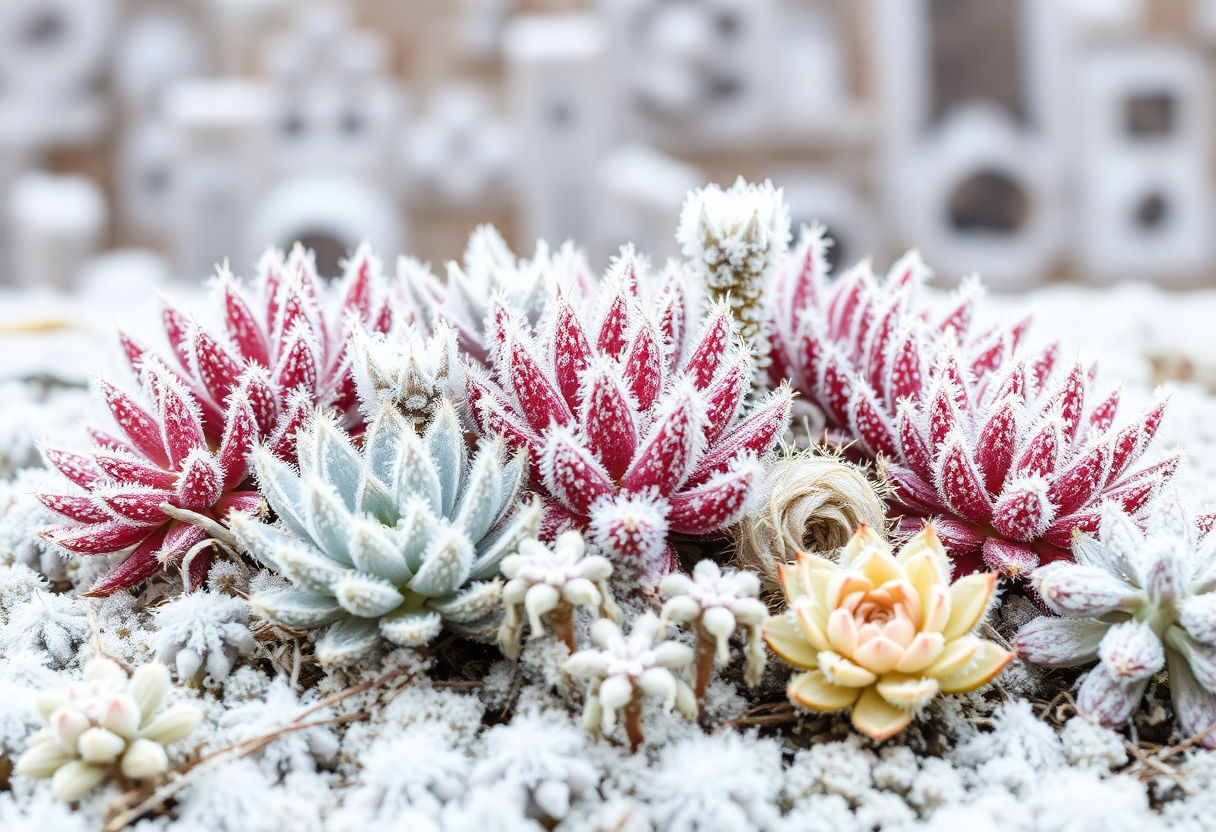
During the winter months, many succulents enter a dormancy period, akin to hibernation, where their growth slows significantly. This natural response to colder temperatures and reduced sunlight is crucial for their resilience and long-term health. Understanding this phase can help succulent gardeners provide the best possible care during these months.
Succulents generally require less water during dormancy. It is essential to reduce watering frequency, allowing the soil to dry out completely between waterings to prevent root rot. A good rule of thumb is to water every four to six weeks, depending on the humidity and temperature of the indoor environment.
In addition to adjusted watering, maintaining an appropriate temperature is vital. While succulents are hardy, they should be kept away from freezing temperatures. Ideally, their surroundings should remain above 40°F. If possible, place them near a sunny window where they can receive bright, indirect light. Utilizing grow lights can also be beneficial if natural light is sparse during winter.
It is equally important to pause fertilization during winter dormancy. Nutrients can encourage growth, which is not advisable during this phase. Resuming feeding only in early spring will ensure succulents do not expend unnecessary energy when they should be conserving it.
For outdoor gardens in regions prone to frost, consider using frost cloths or moving potted succulents indoors to shield them from harsh conditions. With careful management during dormancy, succulents will be well-prepared to emerge from this rest period thriving in the springtime.
Fertilization and Soil Tips
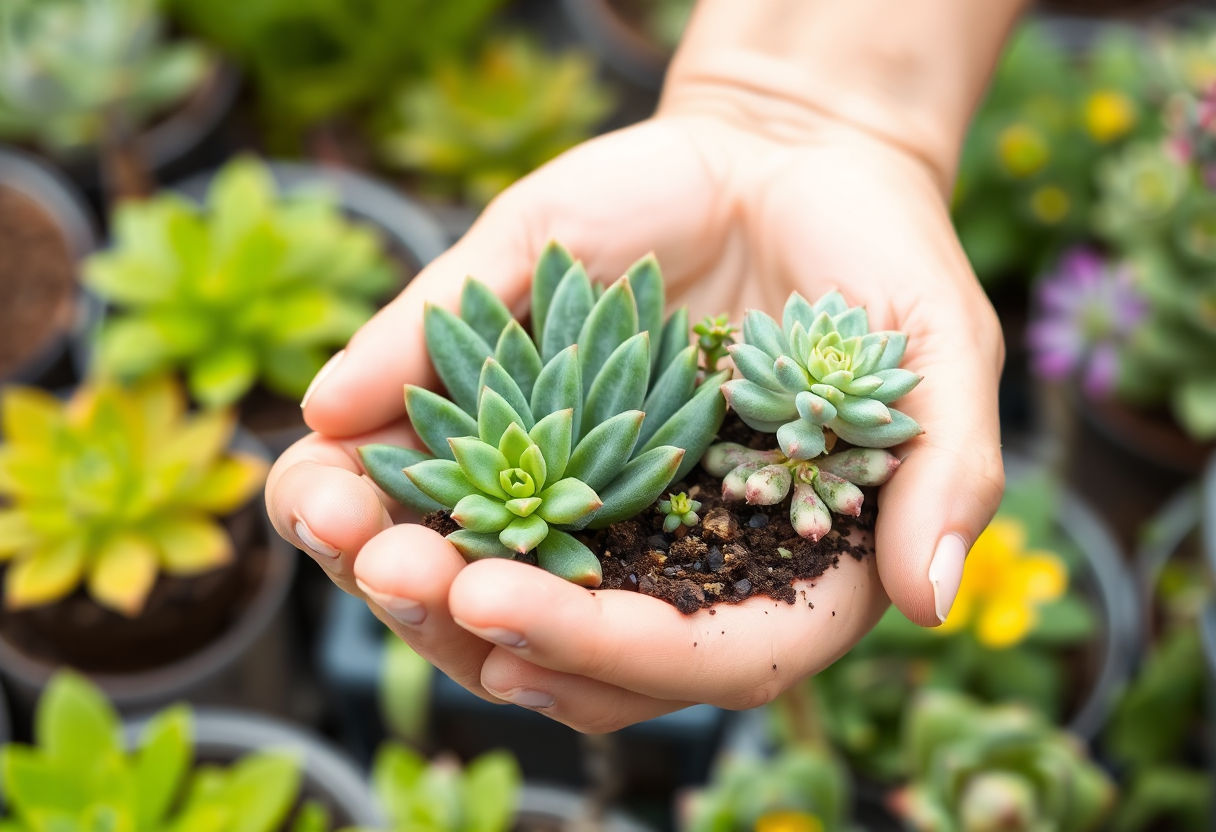
To maintain the health and vitality of your succulent garden, optimizing soil quality and implementing fertilization best practices are crucial. Succulents thrive in well-draining soil, which mimics their natural arid habitats. A mix containing equal parts of potting soil, coarse sand, and perlite is recommended to promote proper drainage and aeration.
Fertilization should be approached with care, as succulents require minimal nutrients compared to other plants. Apply a balanced, water-soluble fertilizer at half strength once during the active growing season, typically spring through early summer. Avoid fertilizing during the dormant winter months, as this can detract from their natural rest period.
When planting or repotting succulents, consider the following soil tips:
- Drainage: Ensure your pots have good drainage holes to prevent root rot.
- Soil Composition: Use or create a succulent mix that emphasizes quick drainage.
- pH Balance: Aim for a slightly acidic to neutral pH level, around 5.5 to 7.5, to enhance nutrient uptake.
For those eager to see their succulents bloom, remember that these plants often benefit from a “lean soil” approach. Too much fertility can lead to robust growth with fewer blooms.
Additionally, creating a layered soil profile, with larger rocks or gravel at the bottom of the container, can improve drainage and root stability. By adhering to these soil and fertilization strategies, you can support your succulents in realizing their full blooming potential, offering a rewarding spectacle each season.
Common Blooming Issues and Troubleshooting
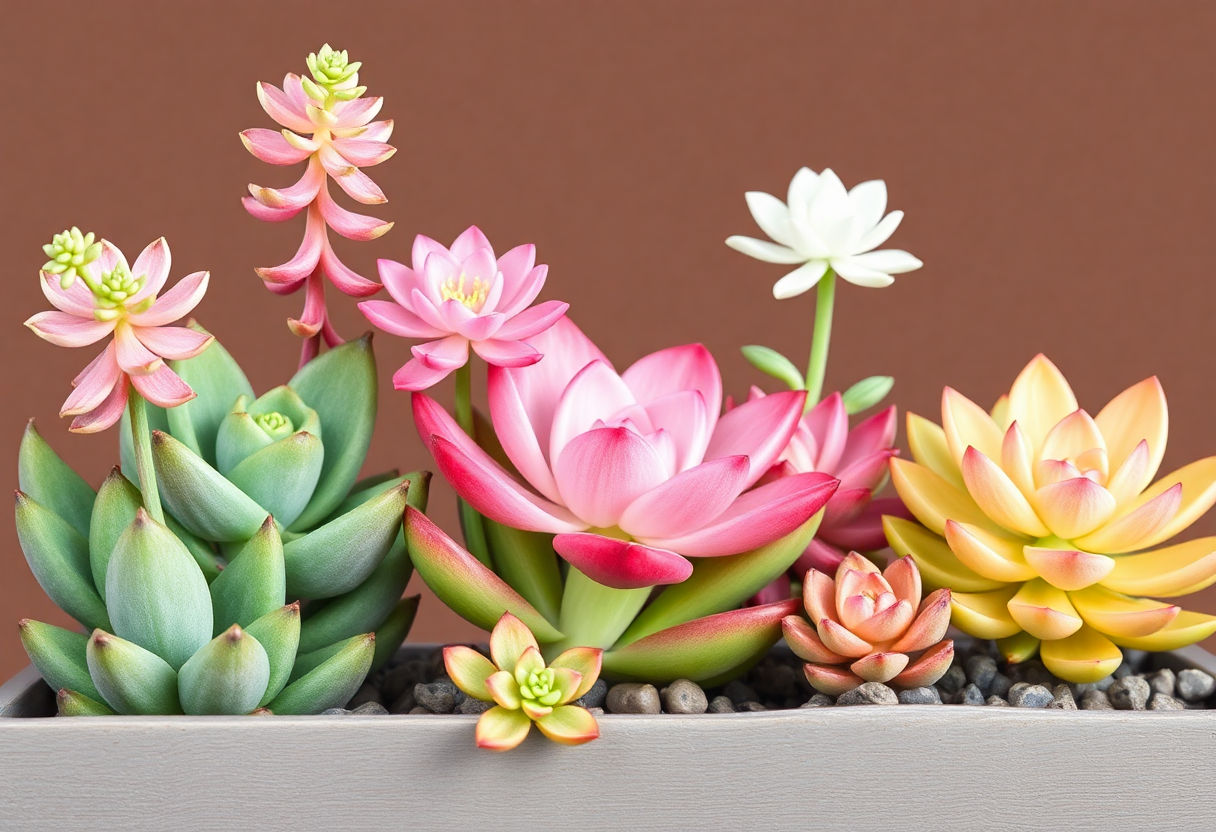
A thriving succulent garden can occasionally face challenges during the blooming phase. Overwatering is a primary concern, as excessive moisture can lead to root rot, inhibiting blooms. Allow the soil to dry completely between waterings, particularly for species like Echeveria and Aloe. Pay close attention to your plant’s specific moisture needs, adjusting your routine according to seasonal shifts.
Another common issue is insufficient sunlight, which can cause etiolation—a condition where plants grow leggy and blooms diminish. Succulents typically require bright, indirect light to flourish. If your plants are indoors, consider rotating them weekly to ensure even light exposure.
Pest infestations can also hinder blooming. Aphids and mealybugs are notorious for targeting succulent blooms, extracting sap and causing damage. Regular inspection is crucial. Introducing natural predators like ladybugs or employing gentle insecticidal soap can mitigate these pests. Additionally, it’s important to address pest damage in succulents as soon as it’s detected to prevent further harm.
Fungal infections, often resulting from poor air circulation and excess humidity, pose another threat. Ensuring adequate spacing between plants promotes air movement, reducing damp environments conducive to fungi. If a fungal issue arises, remove infected areas promptly and apply a fungicidal treatment.
Finally, nutrient deficiencies, particularly in phosphorous, can result in limited blooms. A balanced, low-nitrogen fertilizer during the growth season can support lush blooms without overstimulating foliage growth. Always adhere to the recommended application frequency to avoid over-fertilization, which can be equally detrimental.
Conclusion
In concluding our seasonal blooming guide, it is clear that understanding the unique cycles of your succulent garden is crucial for maintaining its vibrancy throughout the year. With careful attention to spring-time growth, summer hydration, fall preparation, and winter dormancy, your succulents will thrive. By applying consistent watering and fertilization strategies, you can address blooming issues effectively, ensuring a garden that blossoms beautifully each season. Remember, the key to a flourishing succulent garden lies not only in attentive care but also in appreciating the resilient beauty these plants offer as they adapt to each seasonal change.
Frequently Asked Questions
What is the best way to encourage blooms in succulents?
To encourage blooming, ensure your succulents receive adequate sunlight, typically 6-8 hours a day. Additionally, adjust watering to the season, utilizing a well-draining soil mix and providing balanced fertilization during the growth period.
How do I identify the blooming season for my succulent species?
Different succulents have unique blooming cycles. Generally, consult species-specific guides, as some tend to bloom in spring or summer, while others may flower during fall or winter. Observing the plant’s growth and changes throughout the year can also provide clues.
Can I continue to fertilize my succulents during winter dormancy?
It’s best to avoid fertilizing during the winter dormant period when succulent growth slows. Over-fertilization during this time can lead to nutrient burn or disrupt natural cycles, so wait until active growth resumes in spring.
How often should I water my succulents in varying seasons?
Watering frequency varies by season: reduce watering in winter to match dormancy and increase slightly in spring and summer during active growth. Always ensure the soil is dry between waterings to prevent root rot.
Are there specific types of pots that enhance succulent blooming?
Use pots with good drainage, like terra cotta or ceramic with drainage holes, to facilitate the drying of soil. Proper drainage is essential to maintain healthy roots and encourage blooming, especially as seasons change.
